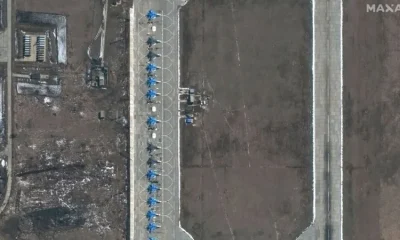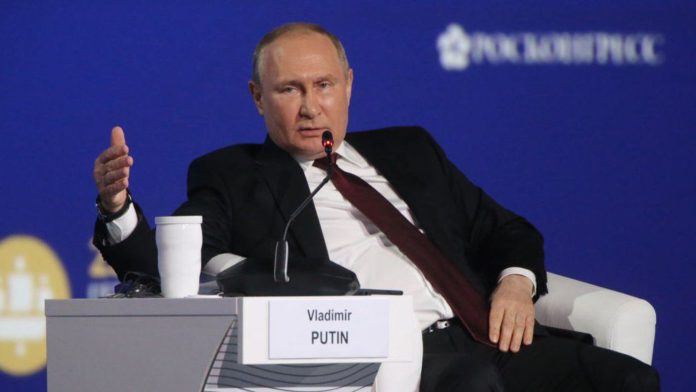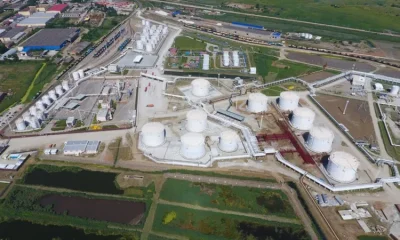Europe
Has Putin’s assault on Ukraine’s power grid failed?
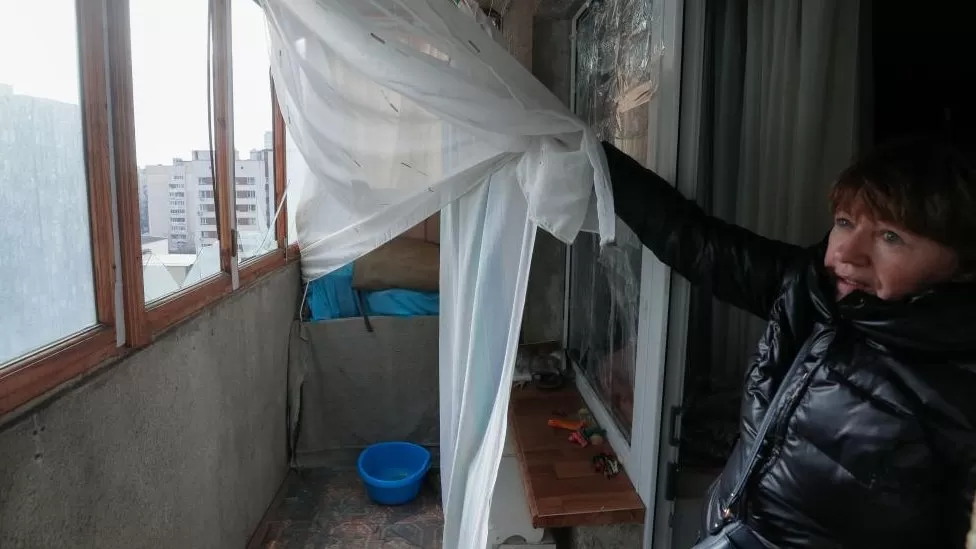
The winter may be over, but Oleksii in Kharkiv believes the battle to save Ukraine’s power supply from Vladimir Putin’s missiles will continue as long as Russia has the ability to strike it.
Every one of Ukraine’s thermal and hydroelectric power plants has been damaged since Russia launched its assault on the energy infrastructure last October. Kyiv had already lost the use of Europe’s biggest nuclear power plant at Zaporizhzhia, which is in Russia hands.
Sub-stations have been reduced to hunks of twisted metal, no longer capable of transforming the electricity to power for homes and businesses.
For two weeks in the depth of winter, the BBC followed teams of engineers and technicians rushing to repair the damage that the missiles had done.
One substation was hit six times with missiles or drones and replacing these damaged transformers will take time.
More from Paul Adams: On the front line with engineers in Ukraine
Transformers have quickly become Ukraine’s number one requirement. It needs more than the world can produce in a year and so far only one high-voltage transformer has been sent, although dozens of lower-power machines have arrived.
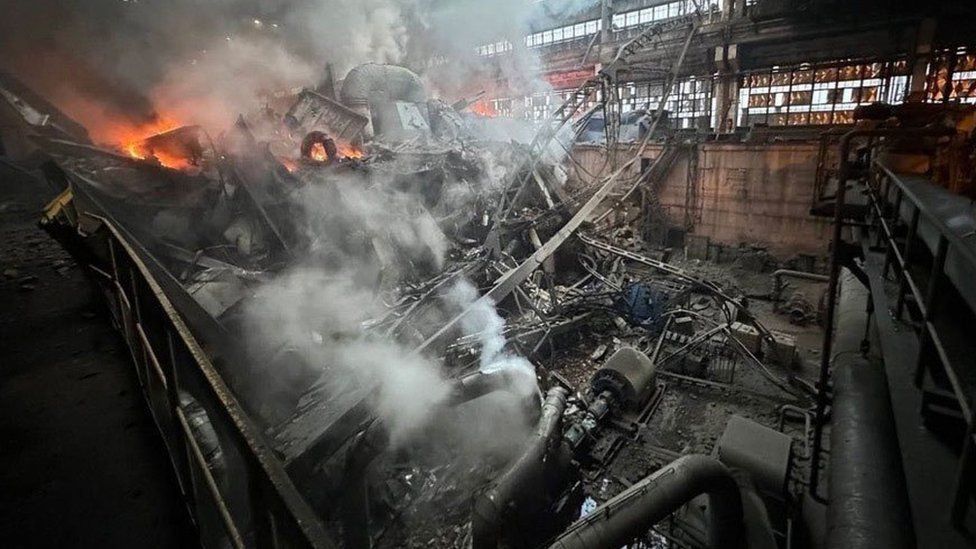
As the winter wore on, Ukraine’s armed forces grew more adept at shooting down Russia’s missiles and drones.
But this week, only 34 of the missiles were destroyed, because Russia used different, high-speed weapons. They included hypersonic Kh-47 Kinzhal missiles as well as anti-ship and anti-aircraft missiles.
“They can cause huge, huge destruction,” said one industry official.
Until Russia’s full-scale war on Ukraine began in February 2022, there were 15 nuclear reactors on stream at four power stations. Six of those reactors were at Zaporizhzhia, seized by the occupying military in the early days of the invasion.
For months, the plant has been at the centre of a high-stakes nuclear row, amid accusations that Moscow wants to connect it to Russia’s electricity grid.
The other three power stations are South Ukraine and Rivne and Khmelnytskyi in the west. Between them, they now produce half of Ukraine’s power.
That may sound bleak, but a combination of an unusually mild winter and sheer hard work means Ukraine has moved back from the brink and the sense of optimism is palpable.
Power plants have been restored and repaired. One source in the industry told the BBC that as the days became sunnier and warmer, it would become harder and harder for Russia’s military might to terrorise his country.
The east-central city of Dnipro has endured several deadly missile strikes over the winter, and this week was no different.
But there have been no problems for weeks with energy supplies.
“The city has transformed. Finally, street lights are back, and it’s no longer scary to walk the city streets,” said Inna Shtanko, a young mother with a son under the age of two.
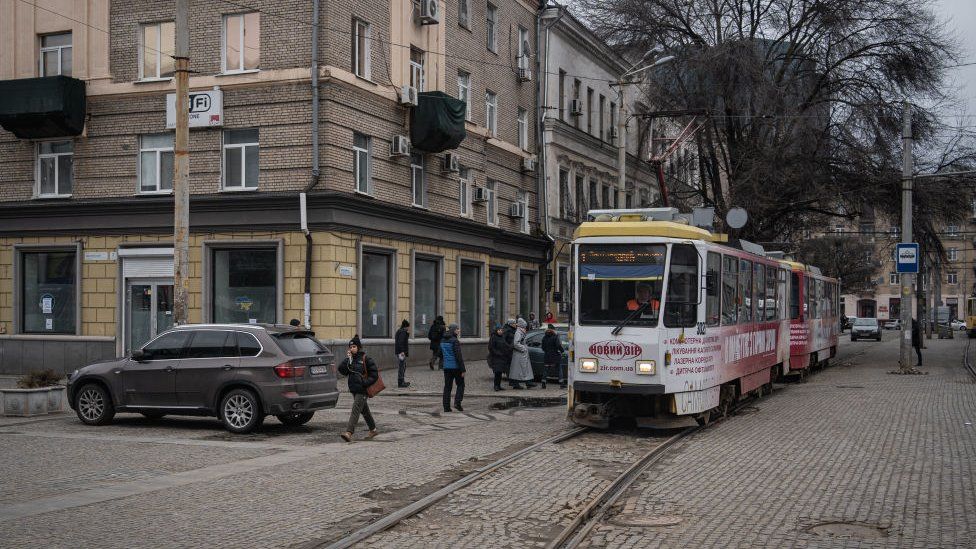
Cooking and having a hot shower have become part of the daily routine once more for her family. “Our psychological state has improved considerably, because our family and other mothers too can easily plan our day.”
There’s a similar story in Kherson, occupied by Russian forces until they retreated across the Dnipro river last November.
Life was hard for several weeks after the Russians left the southern city with no basic utilities.
“We didn’t have any electricity for about month and a week, then we had it for two hours a day, then gradually it stopped breaking,” said local entrepreneur Alexei Sandakov.
Now he boasts a regular power supply, although the pressure on the system is far lower than before the war because the population of 55,000 is a fraction of what it was before the Russians invaded.
Population numbers have fallen across Ukraine, with more than eight million refugees beyond its borders, and that too has put less strain on the energy infrastructure. Consumption is down and the refugees have not yet come back, as one official remarked.
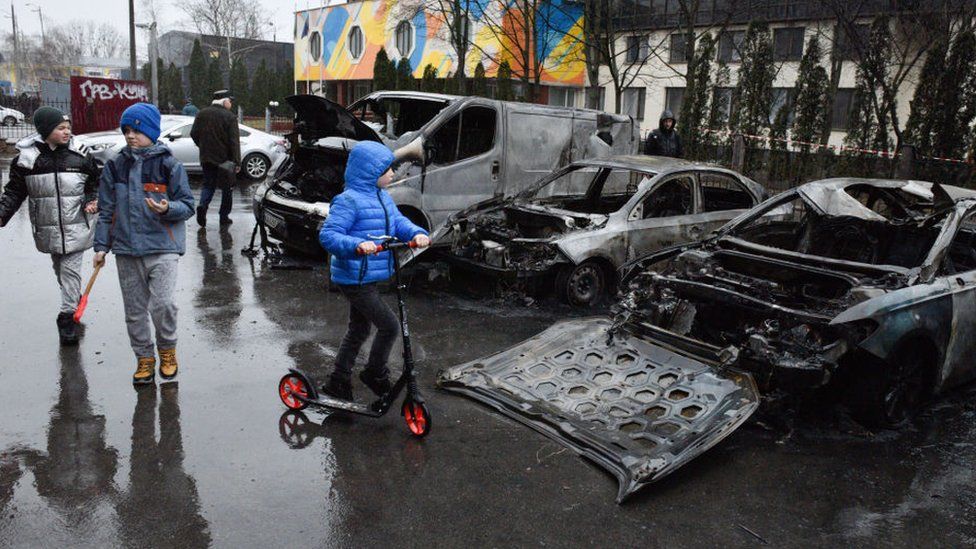
The overall sense is that the damage caused by this latest wave of missiles will be repaired quickly.
The damage was considerable, but engineers have become highly skilled at restoring power within days, even after a major attack.
“It’s like a competition: how quickly can they cause us damage and how quickly can we repair. And we are winning that competition,” said Oleksandr Kharchenko, director of Kyiv’s Energy Industry Research Centre.
In Zhytomyr, Eugene Herasymchuk believes things are looking up. “A lot of Ukrainians say it’s better to have one cold and one dark winter than 100 years with Russia – so I think we can handle this.”
Ukrainians now have everything on their side, according to Mr Kharchenko, from the improving weather to the support of international donors and the professional staff in the energy industry. But he is more guarded about the future.
“I don’t say we’ve won the energy war, but I can say we won the energy battle this winter.”
-

 Lifestyle1 month ago
Lifestyle1 month agoRoad Safety Authority narrates how buttocks causes road accident
-

 GENERAL NEWS2 months ago
GENERAL NEWS2 months agoWhy 15 police officers stormed Owusu Bempah’s church – Kumchacha narrates
-

 GENERAL NEWS1 month ago
GENERAL NEWS1 month agoWatch how Ibrahim Mahama rode Honda superbike to pay last respects to late friend
-

 GENERAL NEWS2 months ago
GENERAL NEWS2 months agoHow Offinso residents storm destooled queen mother’s house, demand for new chief
-

 South Africa News2 months ago
South Africa News2 months agoWoman thrown out of a speeding taxi while on her way to work
-

 GENERAL NEWS4 weeks ago
GENERAL NEWS4 weeks agoDeadly clash between youth and navy personnel results in two deaths at Tema Manhean
-

 SHOWBIZ KONKONSAH4 weeks ago
SHOWBIZ KONKONSAH4 weeks agoJunior Pope’s Death: Video of John Dumelo refusing to join canoe for movie shoot over safety concerns resurfaces
-

 News Africa2 months ago
News Africa2 months ago‘Satanically dubious’ – SCOAN releases statement on BBC’s report about TB Joshua, church





